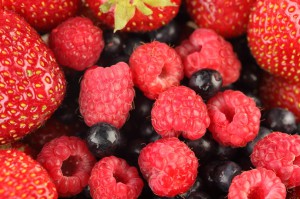
Full Nourishment Foods
Healthy Environment
Nutrient Rich Farming
Full Nourishment Foods
Wellness and Vitality
We are what we eat. It’s true for animals and plants too, including the ones we eat. And crops grown in depleted soils or livestock fed diets focused only on weight gain may not have the density or full range of nutrients that our bodies require.
Beyond that, more and more people buy processed food products. And the nutrient value of food is often processed out to save costs, increase shelf-life, or simply to create a blend of tastes that make us crave more of the product. The result is often just empty calories. So it’s not clear that we can automatically count on the foods we buy to keep us healthy and vital. Add to that the seductive convenience and low cost of fast foods, and the cravings for particular foods created by product design and advertising, and it’s easy to see that food has become part of the problem, not part of the solution.
Access to foods adequate to address nutritional needs is becoming a global problem. Many low-income communities in developing countries must make do with very restricted diets, often through subsidized food distribution. Much of Asia lives on processed rice that is, essentially, nutrient-free. Even in the United States, the food supply contains only about one-third of the fruits and vegetables needed to provide the population with the USDA’s recommended minimum daily requirements. This is market failure on a massive scale.
To generate a supply of—and the demand for—full nourishment foods will not happen overnight, although there are some encouraging innovations that point in that direction. In the short run, nutritional supplements or specially-fortified foods are probably the only real solution. But that, too, is has challenges—many of the supplements in supermarket aisles use minerals or other micronutrients in the cheapest form, often a form that our bodies can’t readily use. The consumer has no source of reliable information to guide choices—there are no labels that spells out the “bioavailability” of the constituents—a clear example of regulatory failure.
Yet market and regulatory failures also spell opportunity, and already it is clear that some food and beverage companies are rethinking their products and beginning to explore what we might call the full nourishment niche. The Global Alliance for Improved Nutrition has just published a ranking of major companies based on their efforts to address nutritional needs. When consumers demand change, markets will respond.
One activity that would help accelerate change would be careful field trials that linked effective full nourishment (or its absence) to wellness and vitality outcomes, something that Nutrition for All and its partners plan to undertake. See field tests for target populations here. Another would be new methods of measuring a person’s nutritional status and linking it to what they eat. See more about measuring full nourishment here.
There are things that families can do for themselves. Ashoka Fellow Sylvia Banda, for example, teaches people to use cooking methods that preserve nutrients, increasing the nutrient value of the foods that families eat. And Fellow Genevieve Moreau is recruiting restaurants, food stores, and consumer groups to her Intelligent Nutrition strategy. Still others are pioneering advanced and highly bio-available nutritional supplements, sometimes with dramatic impact.
To learn more about these innovations, click on “Ashoka Fellows”.
